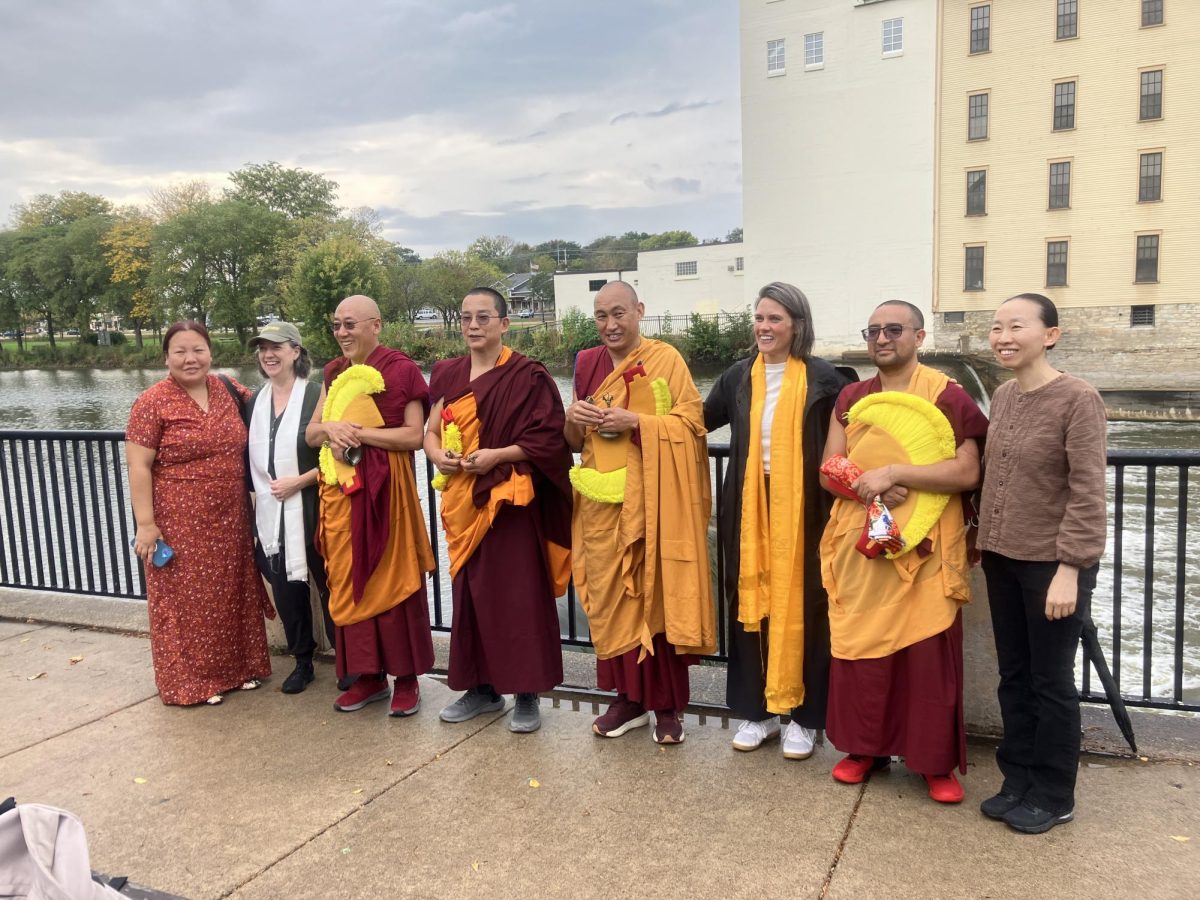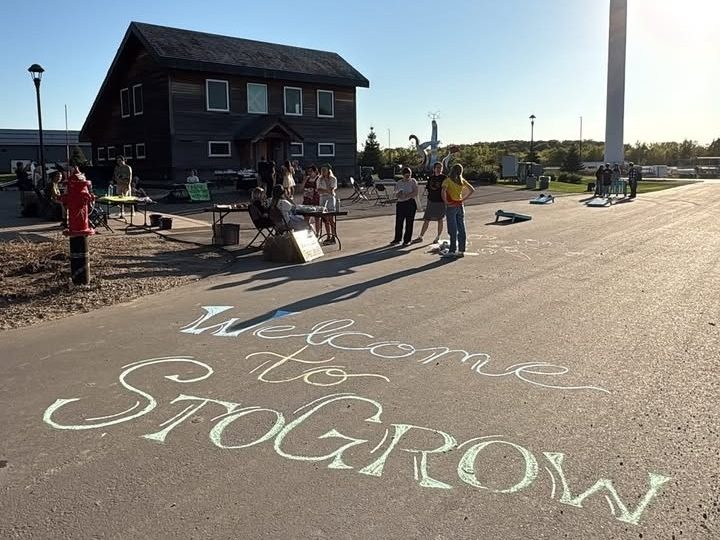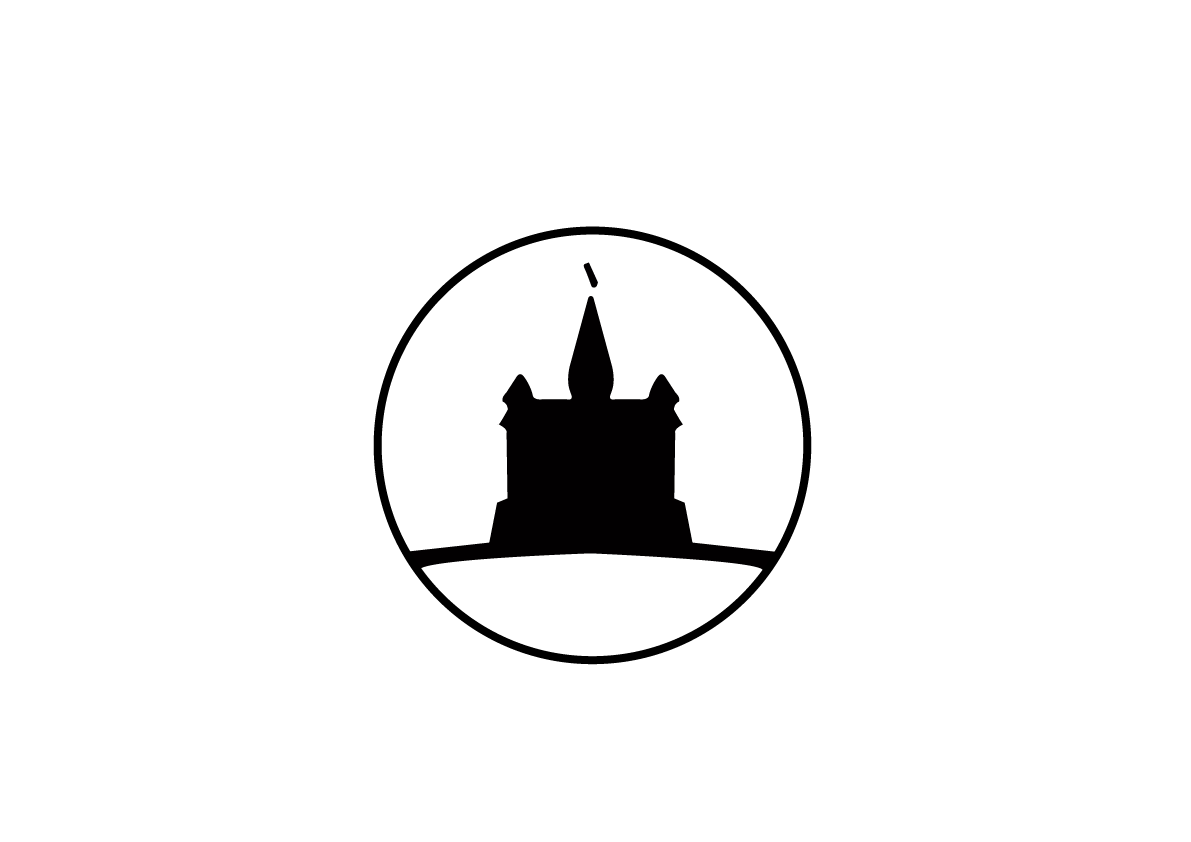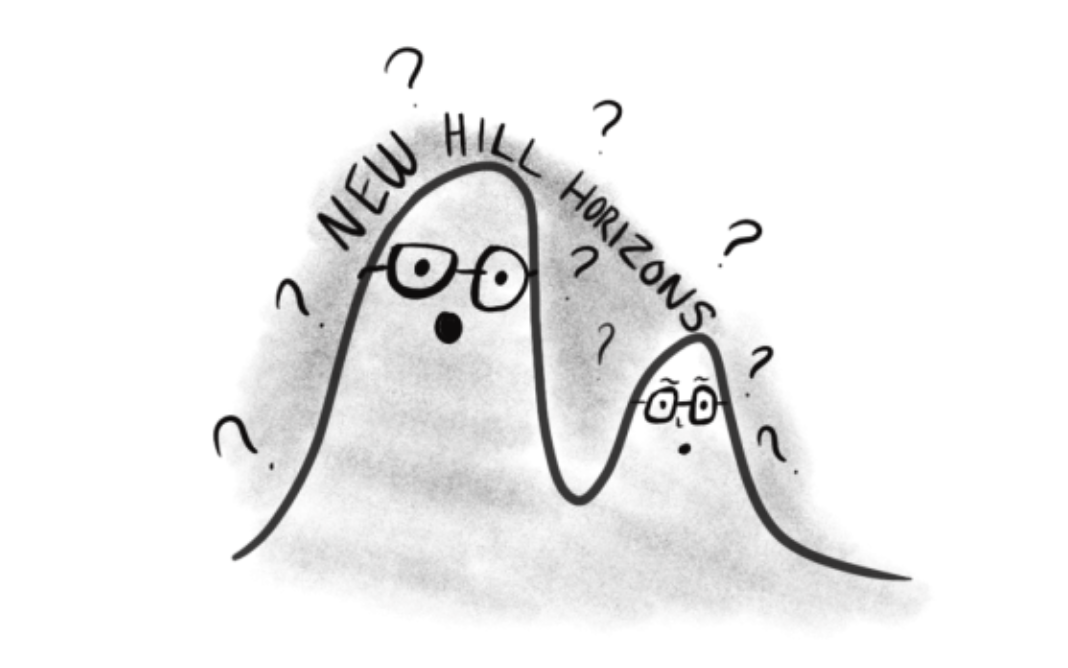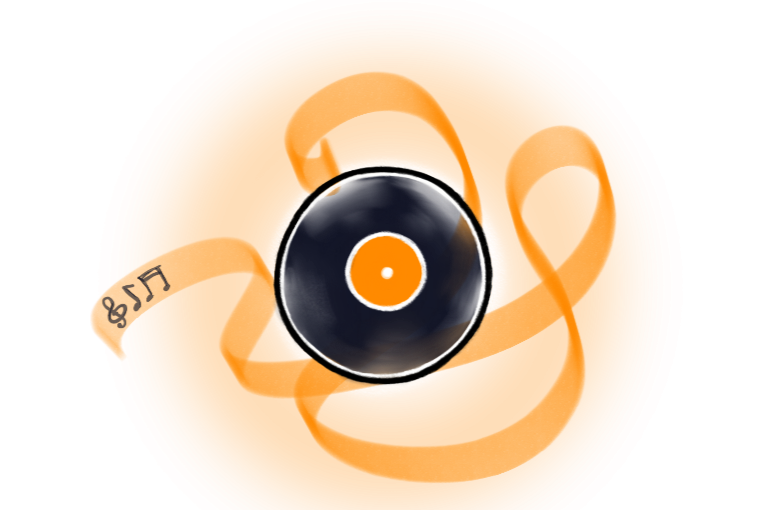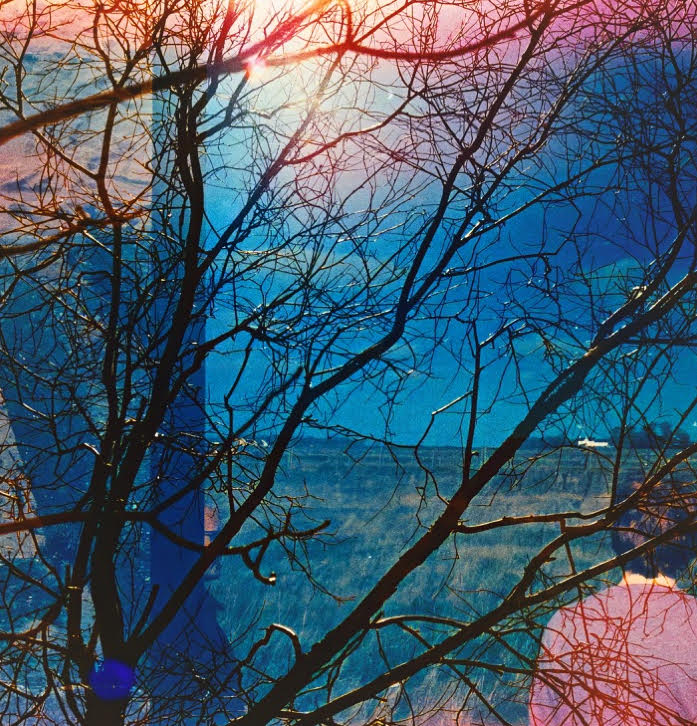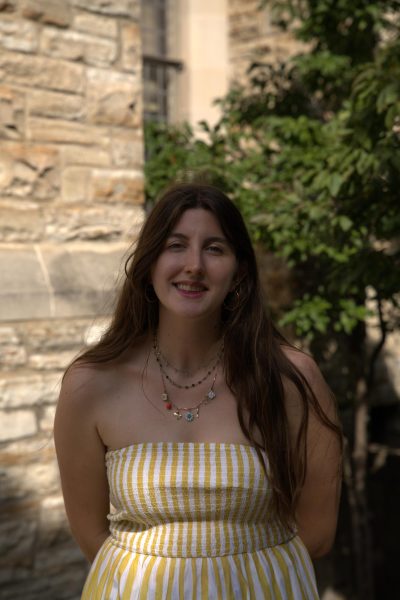On Sept. 30, four monks from the Gyuto Wheel of Dharma Monastery in Minneapolis began creating a sand mandala depicting Avalokiteśvara, the Buddha of Compassion, at the Flaten Art Museum. The mandala is part of the Gateway to Himalayan Art exhibit, which runs through Dec. 7.
For the week the exhibit was on campus, the monks began each day at 9 a.m. with morning prayers, including Tibetan throat singing, lasting 15 to 20 minutes. At 10 a.m., they began assembling the mandala in Groot Gallery. Visitors and media could observe the process from the gallery floor or the Level 2 overlook. The monks paused for lunch daily from 1 to 2 p.m.
A mandala is an intensely detailed, meditative prayer practice. Krista Anderson-Larson, collections manager at the Flaten, told The Olaf Messenger, “The mandala itself represents the home of the god. So the different squares and circles within the mandala are representing different layers of walls in the god’s temple or house. It’s actually a three-dimensional thing, but when we see it, it’s just flat.”
The exhibit was brought to St. Olaf not only out of fascination but also in hopes that Buddhist communities in Minnesota can continue to thrive in a U.S.-centralized society
The culmination of the exhibit was the dissolution ceremony on Sunday, Oct. 5, at 2 p.m. The Groot Gallery was filled with an attentive audience as the monks completed their daily prayers and carefully swept the mandala into a jar. Outside, rain pattered against the windows, blending with the rhythmic sound of Tibetan throat singing to fill the room with a serene, meditative atmosphere. The audience watched as something that had taken hours of meticulous work was swept away within minutes and carried to the Cannon River. There, the sand was poured into the water, symbolically freed according to Buddhist belief, allowing the gods to move through the world.
Visitors are encouraged to walk over to the Flaten Art Museum to see the Gateway to Himalayan Art exhibit, which remains on display through Dec. 7.
